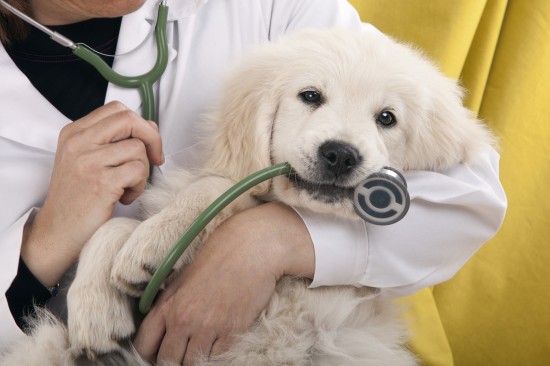
Finding out the causes and symptoms of diabetes in dogs is a humane thing to do for those who really love their pets. For a dog to suffer with a disease such as diabetes can be just as dangerous as it is for a human.
Here in this informative article on the causes and symptoms of diabetes in
dogs, we will take a look at the facts that will help you to learn what causes
diabetes in dogs and how to recognize its symptoms. This can help you give your
pet a longer, happier life.
?/p>
The
cause of diabetes in dogs is similar to the cause of diabetes in humans in that
the pancreas, the organ that produces insulin for the body, becomes damaged.
Insulin is small protein and a hormone used in the body of your dog to regulate
metabolism. The cells in the pancreas of the dog are destroyed by a problem
with the immune system and when that happens, the vital insulin production can
be decreased or terminated altogether.
This means that the body of your dog can no longer use the food that it eats.
When glucose can not be processed in the body, the energy from the food you
give your pet is not used. Insulin is the ingredient that allows the body of
your dog to use the glucose produced by the digestion of food. When insulin is
not present, this more than likely will become a cause of diabetes in dogs.
Problems with the pancreas are the main cause of diabetes in dogs and one to
keep a watchful eye on.
?/p>
Some
lesser causes of diabetes in dogs are; a reaction to drugs, genetic problems,
and Pancreatitis (inflammation of the pancreas). Dogs that are middle aged dogs
are the likely target for diabetes. Middle aged is considered six to nine
years. Younger dogs can also have problems with diabetes. Do not look at any
certain age-limit as an automatic risk factor for when your dog may develop the
symptoms of diabetes. Young or old, your dog has the possibility of developing
diabetes.
The breeds that may be subject to diabetes at an earlier age are Golden
Retrievers and Keeshonds. Other possible causes of diabetes in dogs are
lethargic lifestyles and obesity.
?/p>
Taking
a look at the symptoms of diabetes in dogs, we find that the symptoms in dogs
are similar to humans. Your dog can maintain a strong appetite and even overeat
and still be a dog with diabetes. A list of the symptoms are: being overly
thirsty, frequent urination, unexplained weight loss or weight gain, blurred
vision, increased infections, sores that heal too slowly, and vomiting.
The more common and less noticeable symptoms of diabetes in dogs, such as being
very thirsty and frequent urination can be overlooked easily. They are not a
sure sign by themselves that your dog has diabetes, but it is wise to be
vigilant as they can be the first sign of diabetes.
?/p>
If the symptoms of diabetes in dogs are allowed to progress and grow, partial blindness or blindness can result. Cataracts can form in the eyes of your dog as diabetes works its silent way into the life of your pet. The cataracts form in the eyes as sugar in the bloodstream is collected there. These cataracts will not go away without special surgery even after your dog is diagnosed and then treated for diabetes. Some good news about diabetes-induced cataracts is that some of those cataracts will not grow or change. This can mean that if the symptoms of diabetes in your dog are caught early, the eyes can be spared more damage.
?/p>
Now that you know the causes and symptoms of diabetes in dogs, taking an active interest in the health of your dog will allow your pet to live longer and have a more productive life without the effects of diabetes.
?/p>
?/p>
 Select The Best Food for Your Dog
Select The Best Food for Your Dog
You are the
Select The Best Food for Your Dog
Select The Best Food for Your Dog
You are the
 Knowing When To Call The Vet For Your Cat Or Dog
Knowing When To C
Knowing When To Call The Vet For Your Cat Or Dog
Knowing When To C
 Pet Insurance : The Technicalities
Pet Insurance : T
Pet Insurance : The Technicalities
Pet Insurance : T
 Bird Profile - Zebra Finch
Bird Profile - Ze
Bird Profile - Zebra Finch
Bird Profile - Ze
 Dog Pig Hunting – How to get started
Dog Pig Hunting – How to get started
Hunting p
Dog Pig Hunting – How to get started
Dog Pig Hunting – How to get started
Hunting p
Copyright © 2005-2016 Pet Information All Rights Reserved
Contact us: www162date@outlook.com